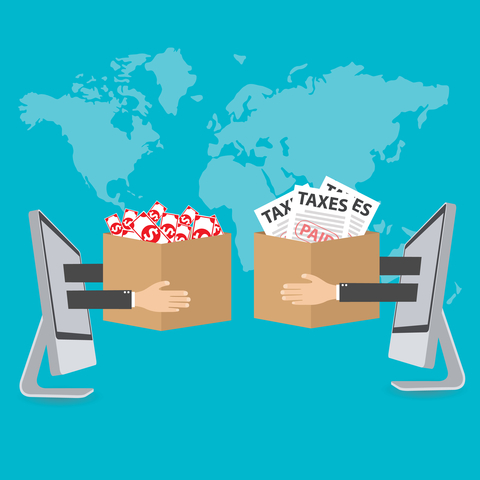 The dictionary defines nexus as a connection or link. In tax parlance, it means having a significant physical presence within a state so that a business becomes subject to that state’s tax rules (i.e., paying state income taxes; collecting sales taxes).
The dictionary defines nexus as a connection or link. In tax parlance, it means having a significant physical presence within a state so that a business becomes subject to that state’s tax rules (i.e., paying state income taxes; collecting sales taxes).
The following discussion is confined to what nexus means for a business’s obligation to collect sales taxes.
The discussion is packed with cases but it’s important to understand what has happened, and what could happen.
History of nexus
In 1992, the U.S. Supreme Court in Quill Corp. v. North Dakota, ruled that states are prohibited from imposing sales and use tax collection responsibilities on sellers that do not have an in-state physical presence (discussed later).
In December 2016, the Supreme Court was again confronted with the issue in Direct Marketing Association v. Brohl, but refused to hear the case. This denial of certiorari meant that the federal appellate court’s decision applies. As a result, a Colorado law applied to retailers that don’t collect sales tax and therefore are subject to notice and reporting obligations is constitutional; requiring these sellers to notify their customers about their personal obligation to pay state sales tax does not discriminate against and unduly burden interstate commerce.
Nexus in practical terms
What type of connection do you need with a state to establish nexus as required by Quill? Over the years, through various court cases, physical presence has come to mean:
- Doing business within a state, even temporarily (e.g., trade show, craft fair)
- Having an office
- Having a warehouse/storing inventory
- Having an employee
- Having an affiliate
- Drop shipping from a third party provider
Once nexus is established, businesses are obligated to collect sales tax on sales within that state. Check for:
- Sales tax-free states. Alaska, Delaware, Montana, New Hampshire, and Oregon have no state sales taxes, so even if you have a nexus in these states, there is no state sales tax. However, there may be local sales taxes that apply to your sales (e.g., some municipalities in Alaska have a sales tax of 7.5%).
- Sales tax exemptions. Not all your goods and services may be subject to sales tax within the state. In Florida, for example, canned software and digital products are exempt from the state’s sales tax.
- Method of figuring sales tax. There are two ways in which sales tax is figured: (1) origin-based and (2) destination-based). With the first, you charge the sales tax at your location (e.g., where your remote office is located). With the second, you figure the sales tax at the customer’s location.
You can use various software or online platforms to help you figure the tax you’re required to collect:
What’s next?
The physical presence rule could be changed for remote sellers; there are two possible developments:
- The U.S. Supreme Court may get another chance to look at nexus. Last month, a district court in South Dakota, in a case called South Dakota v. Wayfair, may have paved the way for review. The case involves a state statute requiring remote sellers (no physical presence) with annual in-state revenue exceeding $100,000, or 200 separate transactions, to collect and remit sales tax to the state. The case is back in a state court on an expedited path. A final decision may ultimately wind up in the U.S. Supreme Court.
- Congress may finally enact legislation on the subject. In the last session of Congress there were various bills that would have allowed states to require remote sellers to collect sales tax without any physical presence in the state, with an exemption for “small remote sellers.” Whether similar legislation will appear in this session, and whether it can be enacted, remains to be seen.
Conclusion
Are you confused? Who wouldn’t be? Make sure to work with your tax adviser so you stay in compliance with sales tax obligations. You can learn more about sales tax issues by attending free monthly webinars offered by Avalara on various sales tax topics, by registering for upcoming events and look over the archives.


